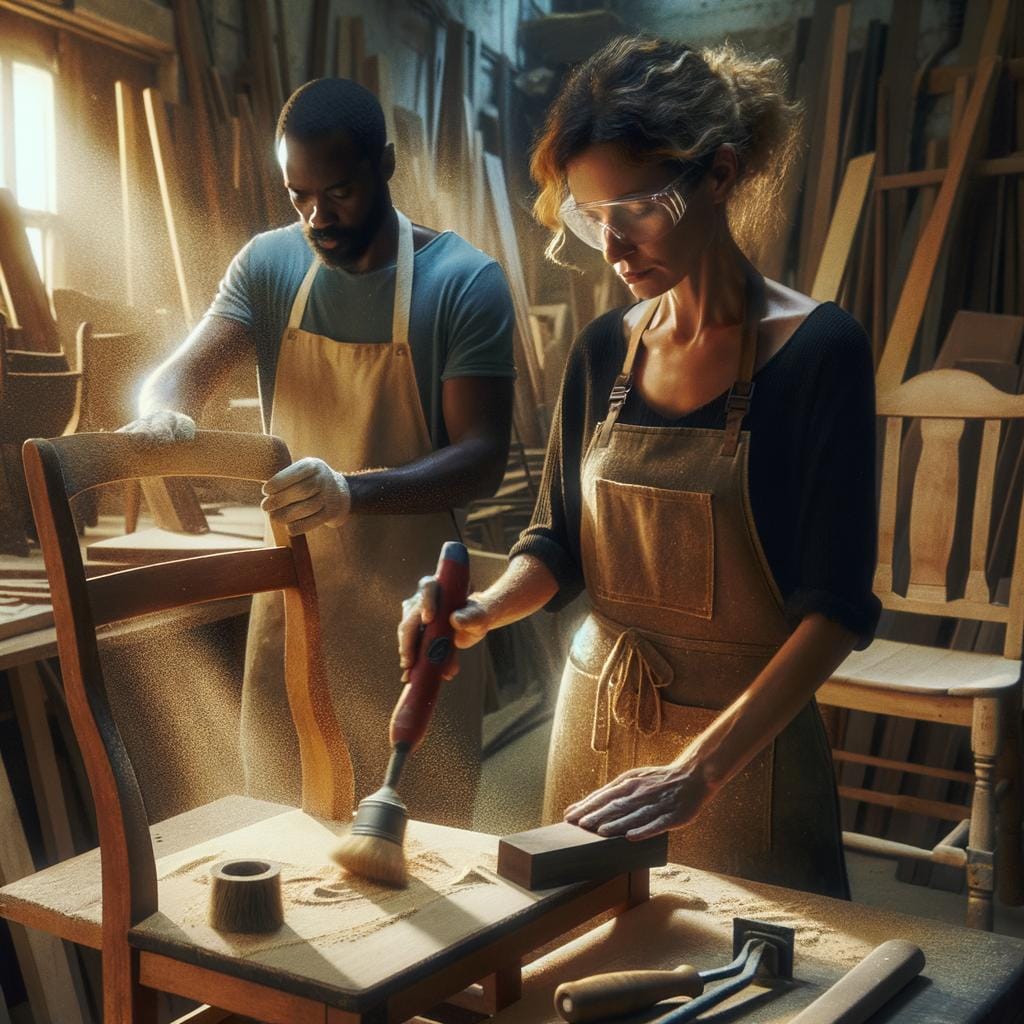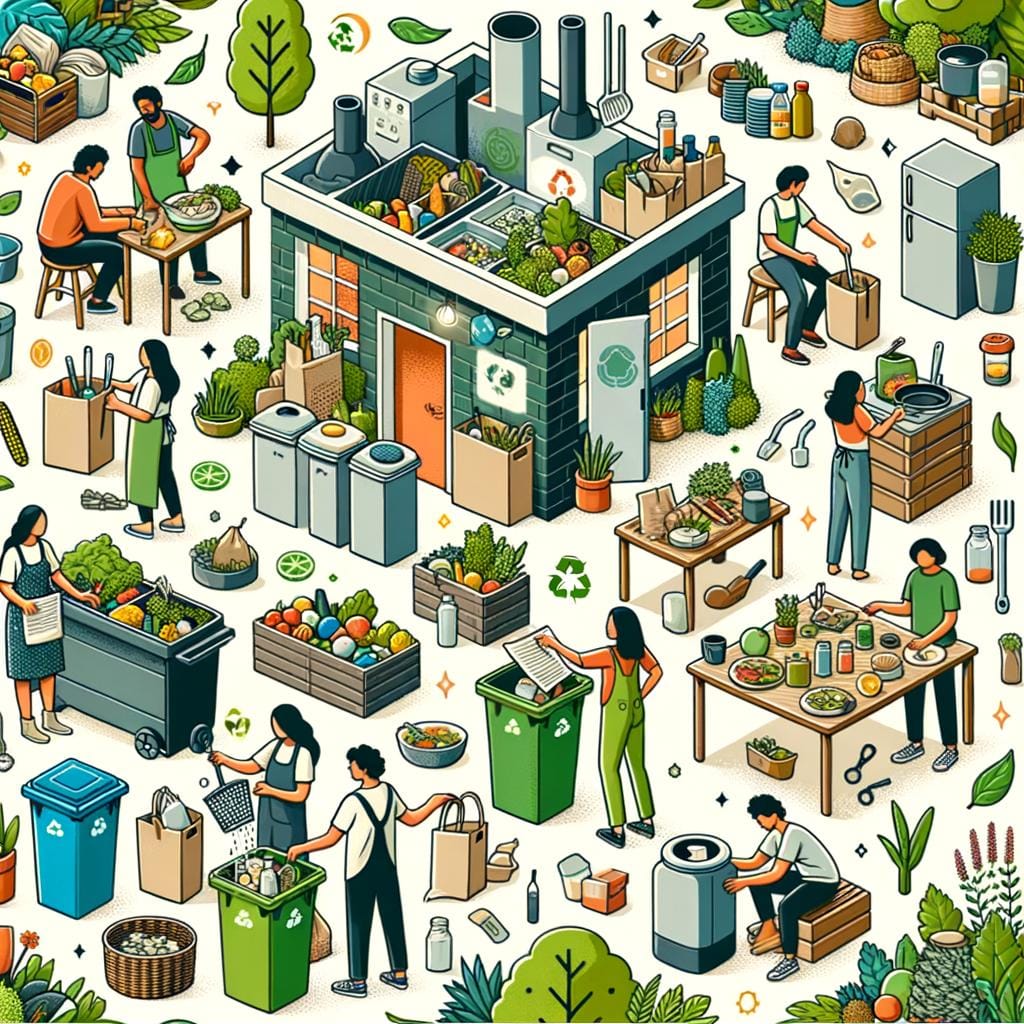Repurposing household items involves finding new and creative ways to use items that might otherwise be discarded or overlooked. From old furniture to empty containers, the concept of repurposing allows individuals to give a second life to items within their homes, reducing waste and saving money in the process. By thinking outside the box and exploring different possibilities for repurposing, individuals can unleash their creativity and contribute to a more sustainable lifestyle.
Apart from the environmental benefits of repurposing household items, such as reducing landfill waste, there are also financial advantages. Instead of constantly buying new products, repurposing allows individuals to save money by utilizing what they already have in innovative ways. Whether it’s turning old clothing into fabric scraps for DIY projects or transforming glass jars into decorative vases, repurposing offers endless opportunities to be both thrifty and eco-conscious.
As we delve deeper into this article, we will explore various creative ideas for repurposing common household items that many may not have considered before. By learning about different tools and techniques for repurposing, individuals can embark on DIY projects with confidence and inspiration. Whether you’re a seasoned upcycler or just starting out on your repurposing journey, this introductory section sets the stage for discovering the endless possibilities of giving new life to everyday household items.
Benefits of Repurposing Household Items
Repurposing household items is not only a creative way to breathe new life into old and unused belongings but also offers a range of benefits. One of the primary advantages of repurposing household items is saving money. Instead of constantly purchasing new products, repurposing allows you to make the most out of what you already have at home. This can lead to significant cost savings over time, especially when it comes to furniture or home decor items.
In addition to saving money, repurposing household items contributes to reducing waste. By finding new purposes for items that would otherwise end up in the trash, you are actively participating in waste reduction efforts. This has a positive impact on the environment by minimizing the amount of discarded materials that end up in landfills and helps promote a more sustainable lifestyle.
Upcycling
One popular trend within the realm of repurposing household items is upcycling. Upcycling involves transforming or redesigning an existing item into something of higher value or quality. This process often requires creativity and innovation, as well as some basic DIY skills. By upcycling everyday objects, you not only save money and reduce waste but also showcase your unique style and personality through your creations.
Community Engagement
Furthermore, engaging in repurposing activities can also foster a sense of community within your social circles or neighborhood. Organizing swap meets, sharing repurposing ideas with friends and family, or participating in local initiatives focused on sustainability can create opportunities for collaboration and shared experiences. This sense of camaraderie adds another layer of fulfillment to the benefits of repurposing household items beyond just saving money and reducing waste.
Creative Ideas for Repurposing Common Household Items
Repurposing household items not only helps in reducing waste but also allows for a creative outlet to give new life to everyday objects. There are numerous innovative and fun ways to repurpose common household items, giving them a fresh purpose and saving money in the process.
One popular idea is using old mason jars as storage containers or even turning them into charming herb planters for your kitchen. These versatile jars can also serve as unique candle holders or DIY lanterns for outdoor gatherings.
Another clever way to repurpose household items is by utilizing old wooden pallets to create rustic furniture pieces like coffee tables, bookshelves, or even outdoor loungers. With just a little sanding and staining, these pallets can be transformed into stylish and eco-friendly additions to your home decor. Additionally, repurposing old t-shirts into reusable shopping bags is not only practical but also environmentally friendly, reducing the need for single-use plastic bags.
Repurposing household items can also extend to transforming empty wine bottles into decorative vases or even cutting boards from reclaimed wood scraps. By thinking outside the box and tapping into your creativity, you can easily find new purposes for items that would otherwise end up in landfills. The possibilities are endless when it comes to repurposing common household items, making it a rewarding and sustainable practice.
Step-by-Step Guide to Repurposing Household Items
Repurposing household items is a great way to get creative, save money, and reduce waste. By using common household items in innovative ways, you can give them a new lease on life and contribute to a more sustainable lifestyle. There are countless possibilities when it comes to repurposing items that would otherwise end up in the trash. From old furniture to kitchen utensils, the only limit is your imagination.
One of the key benefits of repurposing household items is the opportunity to showcase your creativity. Whether you’re turning an empty glass jar into a candle holder or transforming an old ladder into a bookshelf, repurposing allows you to think outside the box and create something unique.
Additionally, repurposing can help you save money by avoiding the need to purchase new items for your home. Instead of buying expensive decorations or storage solutions, consider how you can repurpose items you already have.
When it comes to repurposing household items, having the right tools and techniques can make a big difference in the outcome of your projects. Some essential tools for repurposing include basic hand tools like screwdrivers and hammers, as well as adhesive products like glue or tape.
Techniques such as sanding down surfaces before painting or drilling holes for new uses are also important skills to have when repurposing items. By learning these skills and gathering the necessary tools, you’ll be ready to tackle any repurposing project that comes your way.
| Benefits of Repurposing Household Items | Creative Ideas for Repurposing Common Household Items |
|---|---|
| Saving Money | Turning old mason jars into flower vases |
| Reducing Waste | Repurposing wooden crates into shelving units |
Inspiring Success Stories of Repurposing Household Items
Repurposing household items not only adds a unique touch to your home decor but also contributes positively to the environment by reducing waste. Many individuals have found creative and innovative ways to repurpose common household items, turning them into something functional and aesthetically pleasing.
One such success story is that of Sarah, who transformed old mason jars into beautiful succulent planters. By simply adding some soil and small succulent plants, she was able to create adorable mini gardens that added a pop of green to her living space.
Another inspiring example is Alex, who upcycled an old wooden ladder into a stylish bookshelf. Instead of discarding the ladder, Alex saw its potential as a rustic and charming storage solution for his books.
With a fresh coat of paint and some sturdy brackets, he turned the ladder into a focal point in his living room while giving it a new purpose. This not only saved him money on buying a new bookshelf but also gave new life to an otherwise unused item.
One more success story comes from Emily, who repurposed old denim jeans into trendy throw pillow covers. Instead of throwing away the worn-out jeans, Emily cut them into square pieces, sewed them together, and added colorful buttons for embellishment. The end result was a unique set of throw pillows that added personality and texture to her couch. This creative project not only showcased Emily’s talent for repurposing household items but also helped reduce textile waste in landfills.
| Success Story | Description |
|---|---|
| Sarah’s Mason Jar Planters | Transformed old mason jars into succulent planters. |
| Alex’s Wooden Ladder Bookshelf | Upcycled an old wooden ladder into a stylish bookshelf. |
| Emily’s Denim Jeans Throw Pillows | Repurposed old denim jeans into trendy throw pillow covers. |
Safety Precautions to Consider When Repurposing Household Items
Repurposing household items can be a fun and creative way to give new life to old or unused objects, but it is important to prioritize safety when undertaking such projects. By following some basic precautions, you can ensure that your repurposing endeavors are not only successful but also safe for yourself and those around you.
To begin with, always make sure to wear the appropriate safety gear when working on repurposing projects. This may include goggles to protect your eyes from splinters or debris, gloves to shield your hands from sharp edges or chemicals, and a mask to prevent inhalation of harmful fumes or particles. Investing in these simple pieces of safety equipment can go a long way in preventing accidents and injuries.
Additionally, be mindful of the materials you are working with when repurposing household items. Some objects may contain hazardous substances such as lead paint, asbestos, or other toxins that can pose health risks if not handled properly. Before starting any project, research the materials involved and take necessary precautions such as proper ventilation, wearing a respirator, or using gloves to minimize exposure.
When using tools during the process of repurposing household items, always follow manufacturer instructions and guidelines for safe usage. Keep tools properly maintained and ensure they are in good working condition before beginning any project. In addition, always use tools as intended and avoid taking unnecessary risks that could result in accidents.
Following these safety precautions will not only help protect yourself while repurposing household items but also ensure that your projects are successful and enjoyable experiences. Remember that safety should always be a top priority when engaging in any DIY endeavors involving the transformation of everyday objects into new and unique creations.
- Always wear appropriate safety gear such as goggles, gloves, and masks.
- Research materials for hazardous substances before starting a project.
- Follow manufacturer instructions for tool usage and maintenance.
Eco-Friendly Benefits of Repurposing Household Items
Repurposing household items not only benefits your wallet and helps reduce waste, but it also has a positive impact on the environment. By giving new life to items that would otherwise end up in landfills, you are helping to minimize the amount of waste produced. This practice aligns with the principles of sustainable living and promotes a more eco-friendly lifestyle.
Reducing Carbon Footprint
One of the key environmental benefits of repurposing household items is the reduction in carbon footprint. Manufacturing new products consumes a significant amount of energy and resources, leading to increased carbon emissions. By repurposing items instead of buying new ones, you are decreasing the demand for new production and thereby reducing your overall carbon footprint.
Conservation of Resources
Repurposing household items also plays a role in conserving natural resources. Many materials used in manufacturing consumer goods come from finite resources that are extracted from the earth. By repurposing and reusing items, you are extending the lifespan of these materials and minimizing the need for additional extraction. This contributes to resource conservation and helps preserve our planet’s precious natural resources for future generations.
In addition, repurposing household items can serve as a small but meaningful contribution to mitigating environmental issues such as deforestation, habitat destruction, and pollution. Embracing this practice not only benefits you personally but also makes a difference in promoting sustainability and eco-consciousness in our society as a whole.
How to Incorporate Repurposed Items Into Home Decor
Repurposing household items can not only save you money and reduce waste but also add a unique and personal touch to your home decor. By giving new life to old items, you can create one-of-a-kind pieces that reflect your style and creativity. Below are some creative ideas on how to incorporate repurposed items into your home decor:
- DIY Wall Art: Turn old picture frames into a gallery wall by painting them in different colors or distressing them for a rustic look. Add mirrors, vintage keys, or small shelves within the frames to create visual interest.
- Upcycled Furniture: Give new life to old furniture by sanding, painting, or reupholstering them. An old dresser can become a stylish storage unit with a fresh coat of paint and new hardware while an antique chair can be transformed with modern fabric.
- Repurposed Planters: Use items like mason jars, tin cans, or teacups as unique planters for your indoor plants. Hang them on a wall or place them on shelves to bring a touch of greenery into your space.
When incorporating repurposed items into your home decor, it’s important to consider the overall theme of your space and how the new pieces will complement it. Mixing old and new elements can create a layered and dynamic look that reflects your personality and design aesthetic. Repurposing household items not only adds character to your home but also promotes sustainability by giving new life to objects that might otherwise end up in landfills.
Future Trends in Repurposing Household Items
As we look to the future of repurposing household items, one of the emerging trends that is gaining momentum is the upcycling and sustainability movements. Upcycling involves taking old or discarded items and transforming them into something of higher value and quality, rather than simply recycling or throwing them away. This trend not only encourages creativity but also promotes a more sustainable lifestyle by reducing waste and consumption.
Incorporating upcycled items into our daily lives can have a significant impact on the environment. By finding new uses for old household items, we are able to reduce our carbon footprint and minimize the amount of waste that ends up in landfills. The upcycling movement is not only beneficial for the planet but also allows individuals to save money by repurposing items they already have instead of buying new ones.
As we embrace the upcycling and sustainability movements, it’s important to remember that safety should always be a top priority when repurposing household items. Before embarking on any DIY project, make sure to carefully assess the materials you are working with and use proper tools and techniques to avoid accidents. By following safety precautions and exercising caution, we can continue to enjoy the benefits of repurposing household items while minimizing risks.
Frequently Asked Questions
How Do You Repurpose Everyday Items?
I try to repurpose everyday items by getting creative with their use. For example, old glass jars can be used as storage containers for small items like buttons or screws. Empty tin cans can be transformed into planters for herbs or small succulents.
How Do You Recycle and Reuse Household Items?
Recycling and reusing household items is a priority for me. I always make an effort to sort recyclable materials properly and donate items that are in good condition but no longer needed. Glass bottles become flower vases, while old t-shirts are turned into cleaning rags.
How to Upcycle Things at Home?
When it comes to upcycling things at home, I enjoy DIY projects that breathe new life into old objects. An old wooden crate can be repainted and turned into a stylish storage solution for books or magazines. A worn-out piece of furniture can be sanded down and refinished to look brand new again.

Hello, I’m April Denton, your go-to expert for all things home decluttering and organization. With over a decade of experience helping individuals transform their living spaces into serene, clutter-free sanctuaries, I am passionate about the life-changing benefits of decluttering. My journey into the world of organization began out of necessity, juggling a busy career and a bustling household. I quickly realized that a well-organized home was the key to a more balanced, stress-free life.





